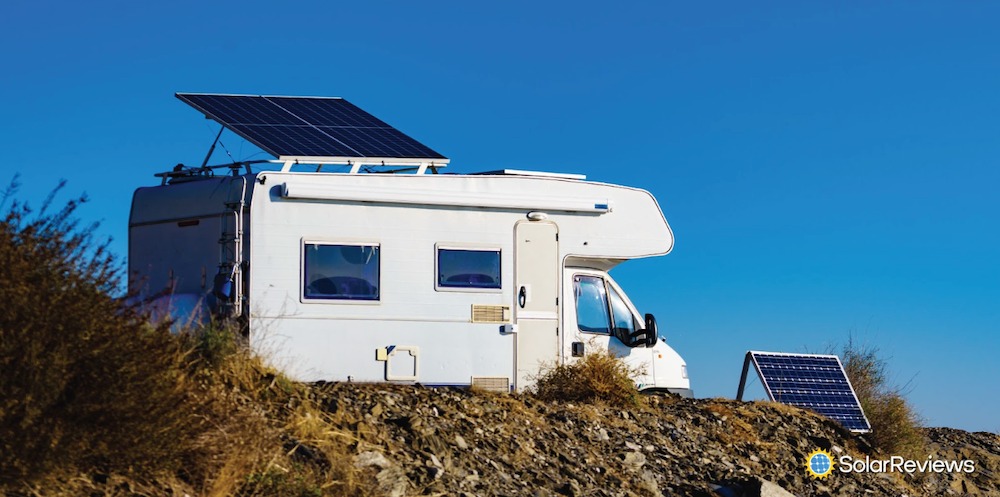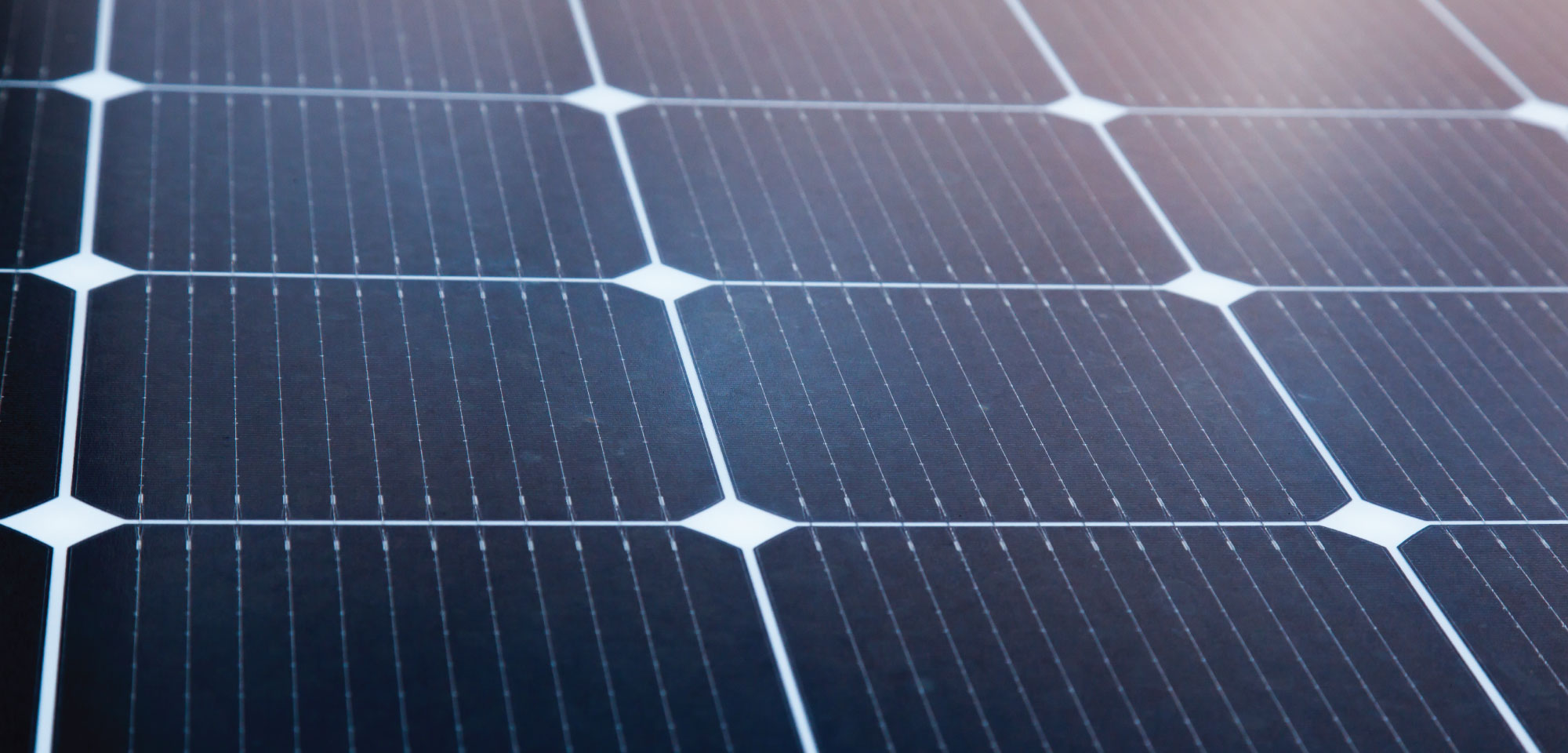Updated 4 months ago
400-Watt Solar Panels Explained: Everything You Need to know
Written by Jamie Smith Jamie SmithJamie is a Content Writer and researcher at SolarReviews. A recent graduate of La Salle University in Philadelphia, Jamie earned her B.S. in communica...Learn more , Edited by Catherine Lane Catherine LaneCatherine has been researching and reporting on the solar industry for five years and is the Written Content Manager at SolarReviews. She leads a dyna...Learn more

Why you can trust SolarReviews
SolarReviews is the leading American website for solar panel reviews and solar panel installation companies. Our industry experts have a combined three decades of solar experience and maintain editorial independence for their reviews. No company can pay to alter the reviews or review scores shown on our site. Learn more about SolarReviews and how we make money.
The wattage of a solar panel describes the panel’s output capacity. So, does a 400-watt solar panel produce enough power for your home?
Just a few years ago, the most common panels used on homes were around 300 watts. Now, as technology has continued to develop, most standard-sized residential solar panels are about 400 watts in size.
In this article, we’ll provide you with everything you need to know about 400-watt panels, brands to consider, the cost, and more.
What is a 400-watt solar panel?
When you’re describing the size of a panel, it’s usually based on the panel’s power output capacity, measured in watts.
So, a 400 W solar panel is capable of producing 400 watts of instantaneous DC electricity under ideal Standard Test Conditions. 400-watt solar panels typically contain 60 to 66 solar cells and are about 5.4 feet long and 3.25 wide.
Standard Test Conditions, or STC, are a set of lab standards that solar panels are tested at. So, a 400-watt panel will only produce 400 watts of power under these ideal conditions.
Unfortunately, your roof isn’t a lab, so your panel will usually be outputting less power than 400 watts. In the real world, a 400 W panel will typically produce closer to 300 W of power. But don’t worry, solar panel systems are designed with this in mind, so your solar system will still generate the amount of energy needed to power your home.
How much energy does a 400-watt solar panel produce?
Power and energy are a bit different, and it’s important to understand the difference. We said a 400 W solar panel will generate 400 watts of power in ideal conditions. The amount of energy it produces is how much power is made over a certain period of time.
You can expect a 400-watt solar panel on your roof to generate between 1.2 kilowatt-hours (kWh) and 1.5 kWh of electricity daily. That's enough energy to power your TV for a full day!
How much energy a solar panel produces depends on a number of factors, including the environmental conditions and the amount of sunlight your roof gets. The following table outlines how much energy a 400 W solar panel will produce in different areas of the U.S.:
Region | Solar energy production (daily) | Solar energy production (monthly) |
|---|---|---|
North East | 1.1 kWh | 34 kWh |
Midwest | 1.2 kWh | 37 kWh |
South East | 1.3 kWh | 40 kWh |
South | 1.4 kWh | 43 kWh |
West | 1.3 kWh | 40 kWh |
How much does a typical 400-watt solar panel cost?
A high-quality 400 W solar panel will cost between $250 and $300 per panel. This price doesn’t include any other equipment needed to use the panel or installation costs.
It’s unlikely that you would purchase just one solar panel. Installing a full 7 kW solar system using 400 W solar panels wouldcost a total of $19,950 before any incentives. When you include the federal solar tax credit, that price drops to about $14,000.
The cost can vary with market conditions, your location, the solar panel brand you choose, and the solar installer you choose.
How many 400-watt panels do I need to power my home?
Most homeowners installing a solar power system on their roof will require between 15 and 30 400-watt solar panels. But exactly how many solar panels you need can vary quite a bit from state to state.
For example, here are how many 400-watt solar panels are needed for the average homes in California, Texas, and Florida:
Table 2: How many 400 W solar panels are needed in different states, on average
State | Avg. system size | 400-watt panels required | Space required |
|---|---|---|---|
California | 7.33 kW | 19 panels | 417 sq. ft. |
Texas | 10.32 kW | 26 panels | 570 sq. ft. |
Florida | 10.75 kW | 27 panels | 592 sq. ft. |
*Assuming each solar panel is 79.8” x 39.6”, does not include access and setback requirements.
Remember that these are just average figures. The right solar system size for your home will be unique to you depending on various factors – like your energy usage, your utility rates, and how much sunlight your roof gets.
Luckily, we have a tool that can help you determine some of these factors. Put your home information into our solar calculator to get a better understanding of your home’s system size.
The best 400-watt solar panels
You may still feel a little lost when thinking of exactly who you should buy panels from. Look no further – here’s a list of some of the best 400-watt panel models from different manufacturers.
Table 3: 400-watt solar panels by the top solar brands
Brand | Panel model | Wattage | What's good |
|---|---|---|---|
Q.PEAK DUO BLK ML-G10+ | 395 - 415 W | - Reasonably priced - Made in the U.S. - Reliable brand | |
HiKu6 Mono PERC | 395 - 420 W | - Great value - Solid warranty - Reliable brand | |
MSE-SX9R | 390-400 W | - American made - 9 busbar technology - Good warranty | |
M-series | 420 - 440 W | - High efficiency - Premium quality - Excellent warranty | |
REC Alpha Pure | 390 - 410 W | - High quality - Operates well at high temperatures - Excellent warranty | |
SIL-400 HC+ | 400 W | - High-efficiency rating - Good performance warranty - Engineered for North American homeowners | |
Eagle Continental | 395 - 415 W | - Assembled in the U.S. - Affordable - Efficient |
How much money can 400-watt solar panels save me?
You can buy solar panels with your specific energy needs in mind. That could even mean offsetting your electric bills completely!
How much money a 400 W solar panel saves you depends on how much energy it produces, which varies based on where you live. But, on average, one 400 W solar panel produces about $7 worth of electricity daily.
As we said earlier, you’re not going to install just one solar panel. You’ll want to have enough solar panels to cover most of your daily electricity needs. A typical U.S. home uses about 892 kWh of electricity per month. That equates to a monthly electricity bill of around $143, not including fees or taxes. If you install 21 400 W solar panels, you could potentially save $1,716 in just one year.
Net metering impacts your savings. Net metering is how utility companies bill solar customers for the excess solar energy they send to the grid. With true net metering, you get the full retail value for every kWh of solar energy you generate, saving you the most money. However, full-retail net metering is becoming increasingly rare. Without net metering, you likely can’t eliminate your entire electricity bill. But you could still save a decent amount.
What can a 400-watt solar panel run?

In the past, 400 W solar panels used to be considered premium-status panels because they had the highest wattage on the market. Now, there are tons of different solar panel manufacturers that offer bigger and more powerful panels.
Here are a few uses for 400-watt panels:
Small-to-large residential homes: Believe it or not, you can still power virtually any home solar panel system with 400 W panels – and a common choice for residential solar.
Common household electronics: The average output of a single 400 W panel can power common small electronics, such as televisions, fans, laptops, gaming consoles, and more!
RV or boat: Looking to take your solar adventures off-grid? 400 W panels are a perfect pair with a mobile home or boat anywhere and anytime!
Appliances: Although they are more power-hungry, you can power appliances such as a microwave, washing machine, or refrigerator with 400 W panels – you may just need more than one!
There are plenty of uses you can get out of 400 W panels, and when you pair it with a good inverter, powering your household is environmentally friendly and affordable!
Should I use 400-watt solar panels to power my home?
Yes, 400-watt solar panels are commonly used in residential solar projects. You can wire together several 400-watt panels to build the solar system size you need.
For instance, a typical 6 kW home solar system will run you about fifteen 400 W panels for your roof. Several front runners in the solar manufacturing industry (like the ones we listed above!) offer panels in the 400s range for home or commercial use.
Panels nowadays do have higher wattage, but that doesn’t mean 400-watt panels are a thing of the past. In fact, they’re a good choice to make the most of your roof space. Not to mention, they’ve also become a relatively affordable option.
Final thoughts: Are 400-watt panels right for you?
400 W solar panels are an excellent choice for running your home or business. In fact, they’re now very common, especially for residential solar panel installations. Because solar panels are so much more powerful now than before, you can install fewer panels while still covering all of your energy needs.
Make sure to get 400-watt solar panels from a trusted solar company that carries reliable panel brands. Your solar installer can help you decide the best 400 W panels for your home and design a system that gives you the best solar panel savings possible!
What are common solar panels sizes?
Jamie is a Content Writer and researcher at SolarReviews. A recent graduate of La Salle University in Philadelphia, Jamie earned her B.S. in communications with a concentration in journalism, mass media, and public relations. Jamie has previously worked at a marketing company where she had the opportunity to highlight and promote small business owners through long-form stories and interviews. With a deep-rooted passion for creativity, Jamie stri...
Learn more about Jamie Smith